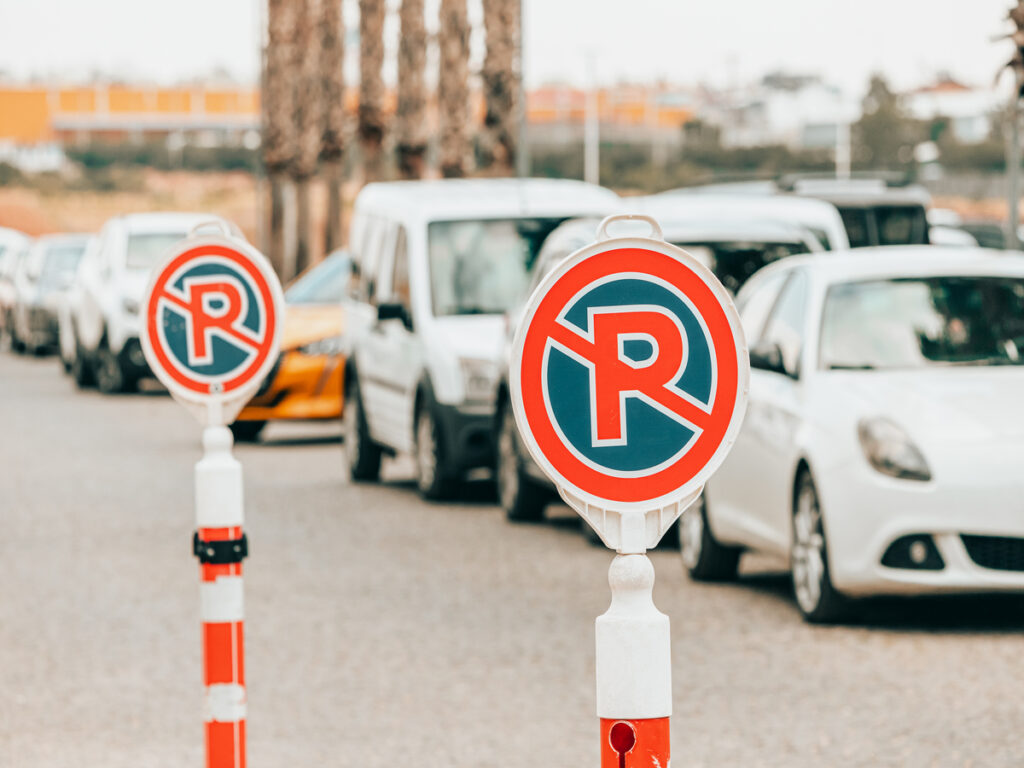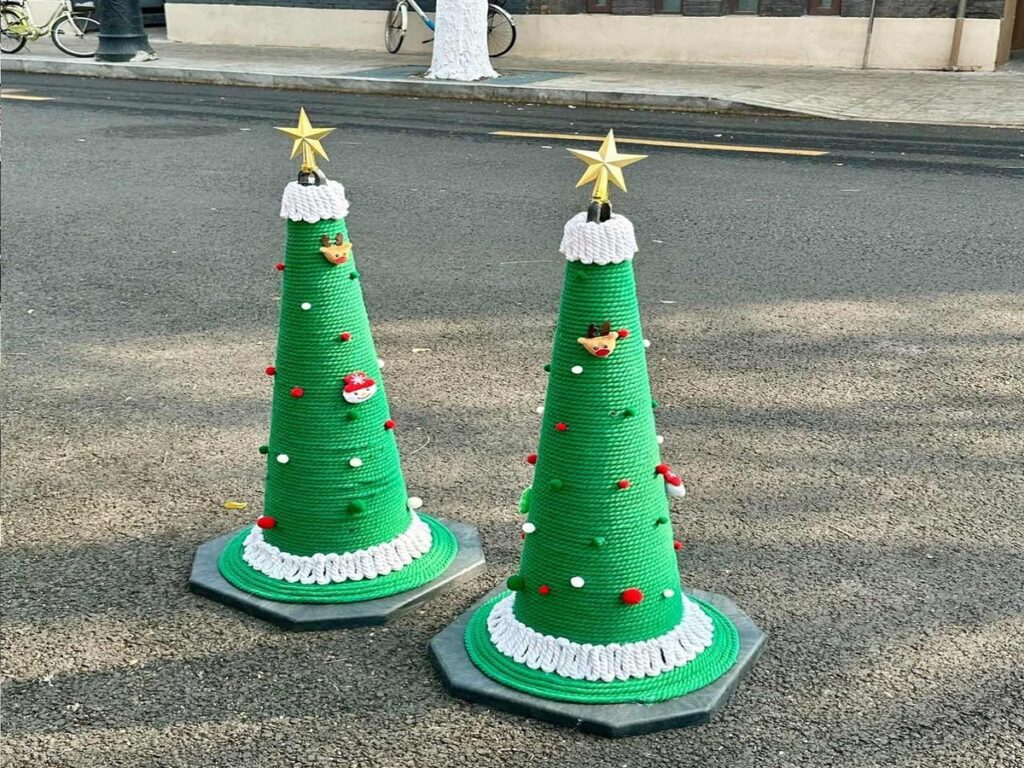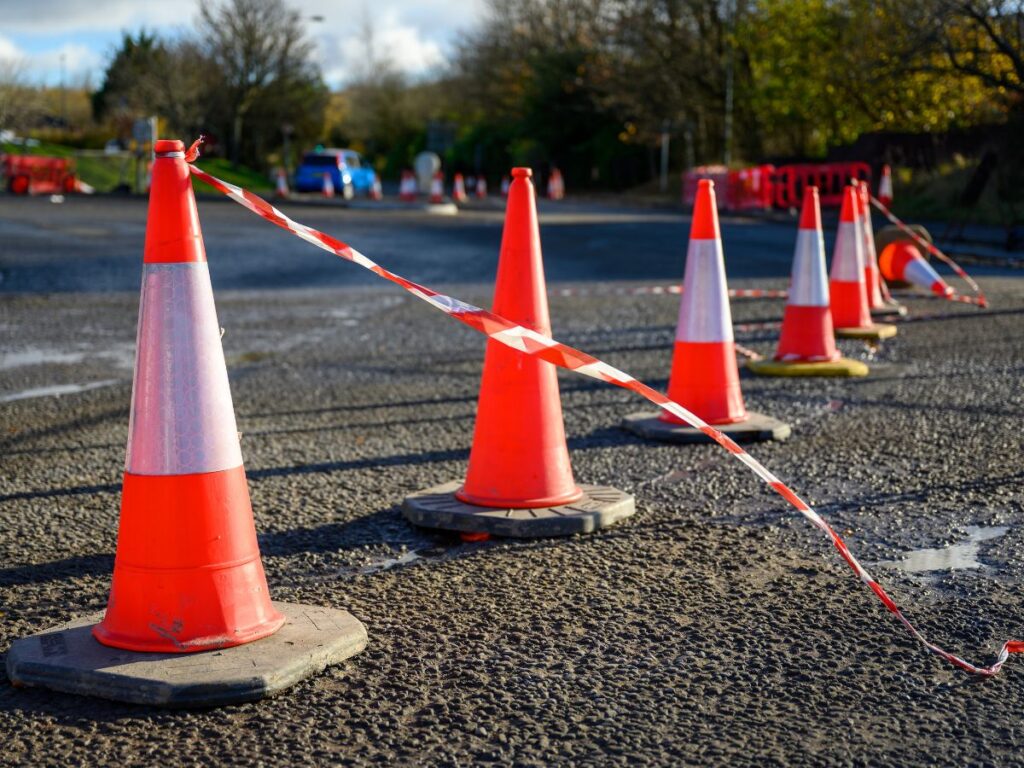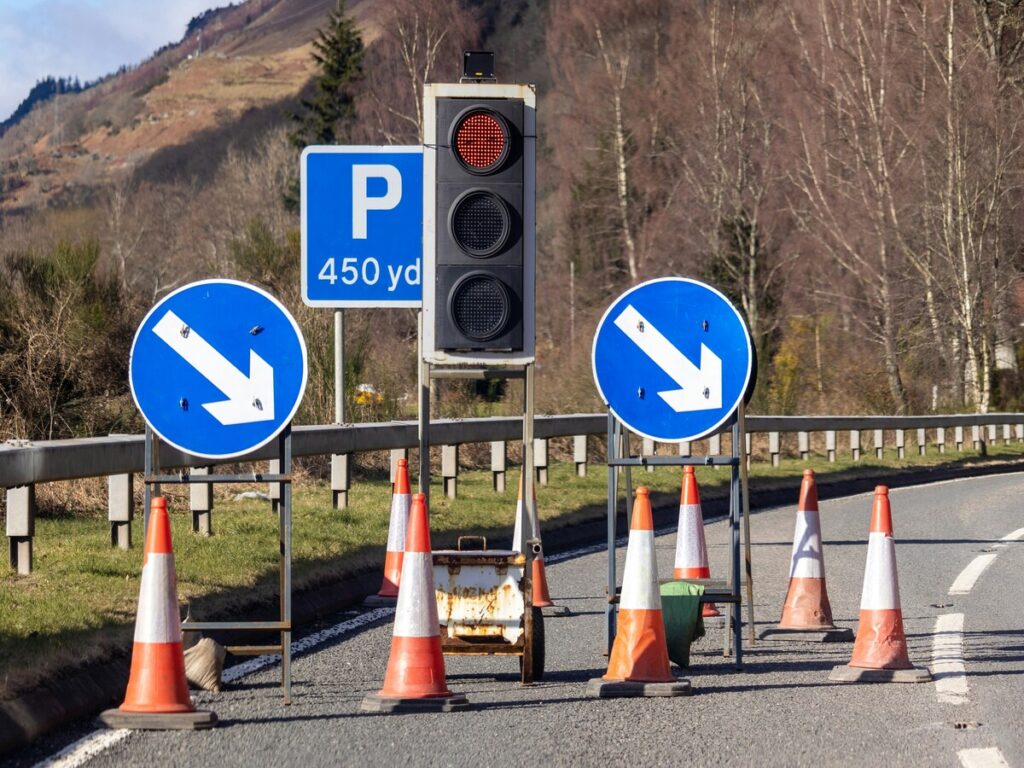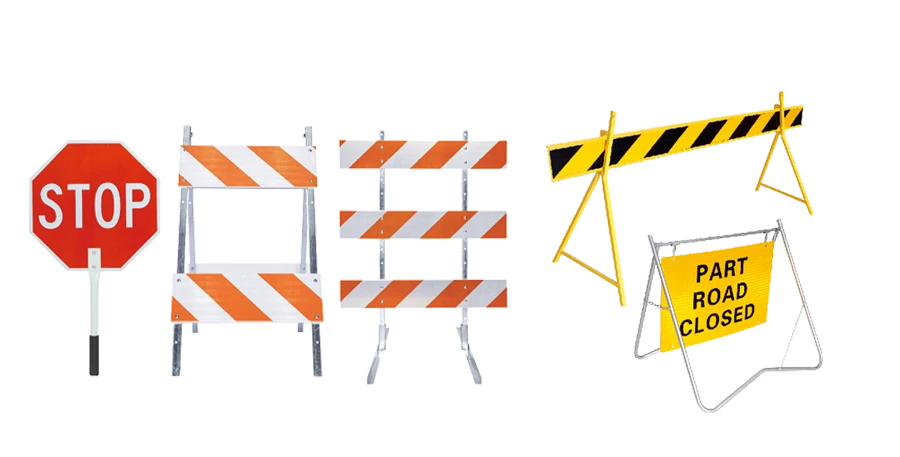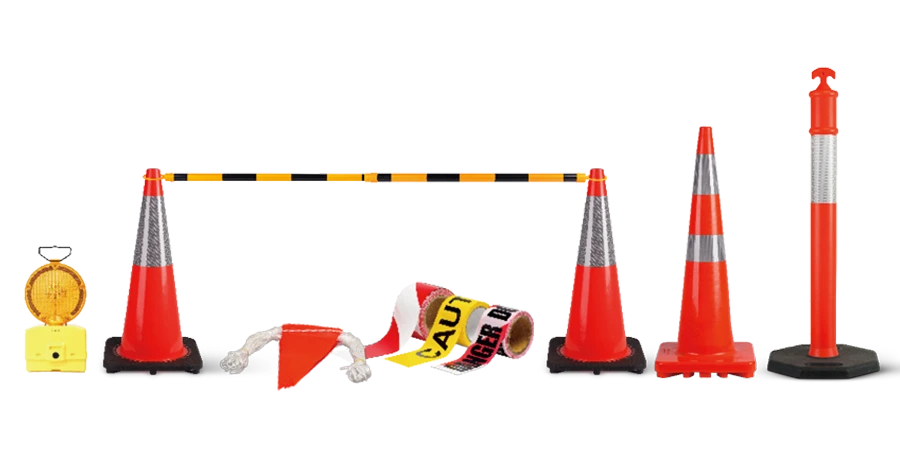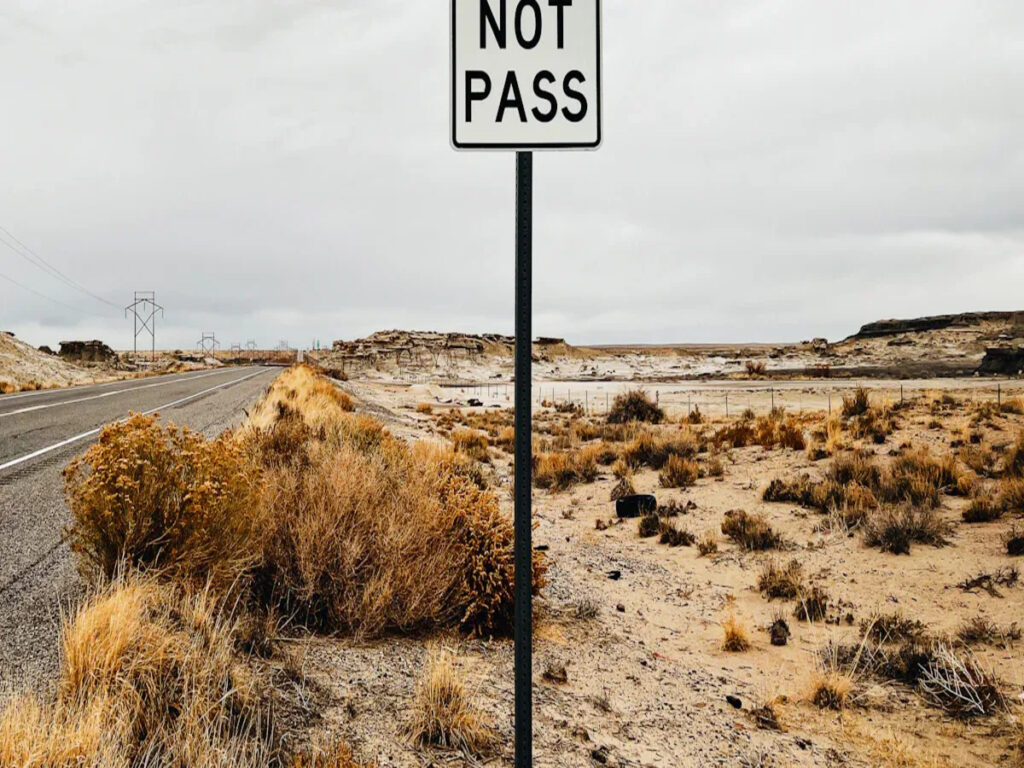
I segnali di sicurezza del traffico aiutano i conducenti e proteggono le strade ovunque. I conducenti di altri paesi possono essere confusi da nuovi segni o lingue. I paesi cambiano segnali di sicurezza del traffico per adattarsi alla propria cultura, lingua, e regole di guida. Questi cambiamenti possono influenzare il modo in cui i driver sicuri sono e se seguono le regole. Usando parole chiare, simboli, E i segni in più di una lingua possono abbassare gli incidenti e rendere le strade più sicure.
A Optraffic, Forniamo segnaletica di sicurezza del traffico di alta qualità soluzioni per i clienti in tutto il mondo, Garantire che i nostri segni siano chiari, compiacente, ed efficace nel promuovere la sicurezza stradale in diverse regioni.
| Miglioramento o fattore della segnaletica | Impatto sulla conformità del conducente e sui tassi di incidenti |
|---|---|
| Segni e segni migliori agli incroci | Abbassa gli incidenti ad angolo destro e posteriore 40% |
| Luci lampeggianti a intersezioni controllate dall'arresto | Può abbassare gli arresti anomali 12-58% |
| Semplice, parole chiare e simboli comuni | Aiuta i conducenti a capire velocemente, riduce la confusione e lo stress, e rende la guida più sicura |
Standardizzazione dei segnali di sicurezza del traffico
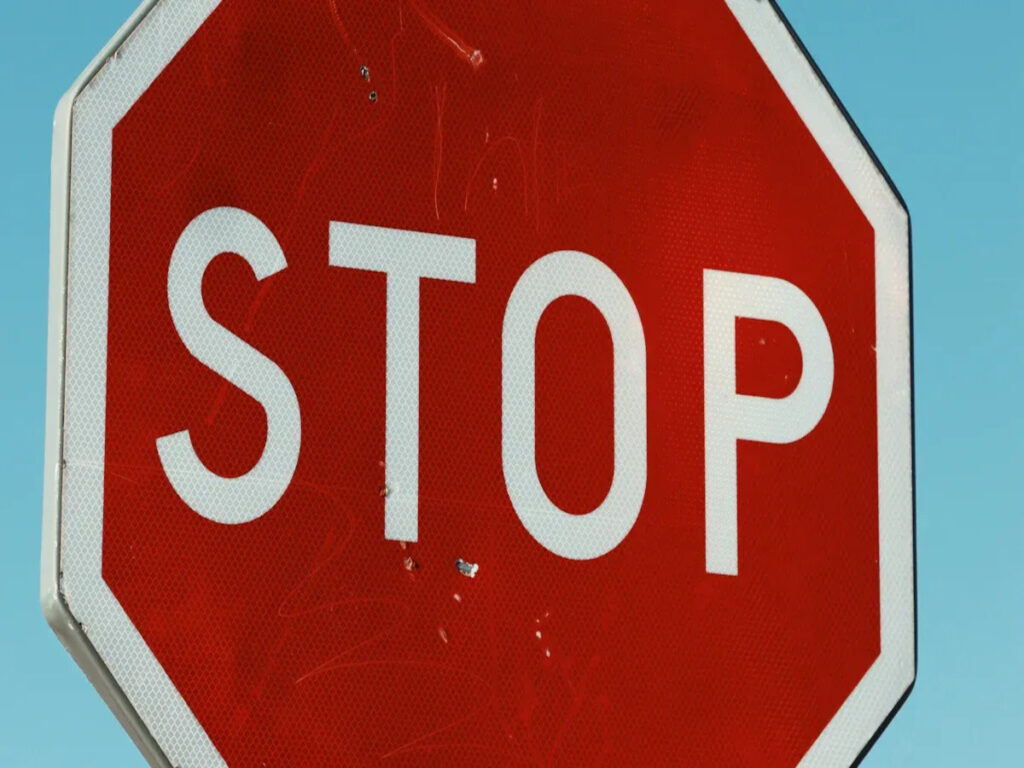
Panoramica degli standard internazionali
I paesi usano regole internazionali per rendere più sicuri i segnali stradali. IL Convenzione di Vienna sui segnali stradali e i segnali sono iniziati 1968. Cerca di far sembrare gli stessi segnali stradali ovunque. Il presente Accordo stabilisce le regole per le forme, colori, e simboli. Sopra 70 Paesi, principalmente in Europa, Segui queste regole. Gli Stati Uniti, Canada, Australia, E la Nuova Zelanda usa alcune idee dalla Convenzione di Vienna. Ma non seguono tutte le regole. Questi paesi fanno le proprie regole per soddisfare le esigenze locali.
Studi dimostrano che segnali stradali simili aiutano i conducenti di luoghi diversi. Nell'Unione europea, I segni del limite di velocità sembrano uguali in molti paesi. Questo aiuta le persone a guidare in sicurezza quando attraversano i confini. La convenzione di Vienna aiuta i conducenti a conoscere segni importanti, Come Stop Or Reming, Ovunque vadano. Ancora, Ogni paese a volte cambia segni per la propria lingua o cultura.
| Tipo di prova | Descrizione |
|---|---|
| Accordo internazionale | La convention di Vienna rende i segnali stradali più simili in tutto il mondo. Imposta le regole per le forme, colori, e simboli. |
| Tasso di adozione | Sopra 70 Paesi, principalmente in Europa, Usa la Convenzione di Vienna. I paesi di lingua inglese lo usano di meno. |
| Standard regionali | Gli Stati Uniti. Usa il MUTCD. L'Australia usa come 1742, che mescola le idee Mutcd e Vienna. Anche il Canada e la Nuova Zelanda usano un mix. |
| Miglioramento della sicurezza | Chiaro, I segni standard aiutano i conducenti a capire e abbassare gli incidenti ovunque. |
Adattamenti specifici del paese
I paesi di lingua inglese cambiano le regole internazionali per adattarsi alle proprie strade e leggi. Questi cambiamenti aiutano i conducenti a comprendere meglio i segni in ogni luogo. Gli Stati Uniti utilizzano il manuale su dispositivi di controllo del traffico uniformi. Questa guida dice a Cities e afferma come fare segnali stradali. I segni americani usano spesso diamanti gialli per avvertimenti e hanno più parole che simboli.
L'Australia usa come 1742, che mescola Vienna e Stati Uniti. idee. I segni australiani usano sia i simboli che le parole. Usano chilometri all'ora per la velocità. Alcuni segni mostrano animali locali, Come i canguri. Il Canada utilizza regole come gli Stati Uniti, Ma alcuni posti, Come il Quebec, Hai bisogno di segni in inglese e francese. I segni canadesi usano spesso forme di diamanti e parole inglesi, Ma in Quebec, Anche i segni usano il francese.
Il Regno Unito usa il Regolamenti sui segnali stradali e direzioni generali. I segni britannici seguono più da vicino la Convenzione di Vienna. I segnali di avvertimento hanno bordi rossi e forme del triangolo. Il Regno Unito. Usa più simboli e meno parole. Questo aiuta le persone che parlano lingue diverse.
| Aspetto | MUTCD (NOI.) | COME 1742 (Australia) | Tsrgd (REGNO UNITO.) / Convenzione di Vienna (Europa) | Standard canadesi |
|---|---|---|---|---|
| Forma del segnale di avvertimento | Giallo a forma di diamante | Mix di diamante e triangolo; Cambiamenti locali | Segnali di avvertimento del triangolo rosso | Come MUTCD; Segnali di avvertimento a forma di diamante |
| Uso dei simboli vs testo | Più parole con simboli | Sia simboli e parole; Parole locali come "cedere’ | Più simboli, meno parole per molte lingue | Più parole e simboli inglesi |
| Unità di velocità | Miglia all'ora | Chilometri all'ora | Chilometri all'ora | Miglia all'ora (Come gli Stati Uniti) |
| Adattamenti locali | U.S standard. segni, Materiali riflettenti | Segni speciali come gli attraversamenti del canguro, zone scolastiche con luci lampeggianti | Segue la Convenzione di Vienna con alcuni cambiamenti locali | Come gli Stati Uniti. Mutcd con parole inglesi |
| Utilizzo della lingua | Per lo più inglese | Inglese con parole australiane | Più simboli per molte lingue | Per lo più inglese |
| Legale e applicazione | Regole federali con potere legale | Regole nazionali per le leggi sul traffico australiano | Standard del trattato europeo (Convenzione di Vienna) | Regole nazionali come Stati Uniti. MUTCD |
Segni stradali: Design e simbolismo
Simboli universali e variazioni regionali
I segnali stradali usano simboli che molte persone conoscono. Un ottagono rosso significa “fermare” In molti posti. Un triangolo significa “prodotto” In molti paesi. Queste forme e colori aiutano i driver a individuare i segni importanti velocemente. I conducenti possono capirli anche se non conoscono la lingua. Nei paesi di lingua inglese, I segni usano sia simboli che parole. Gli Stati Uniti mettono brevi parole con simboli per chiarire le cose. Il Canada utilizza segni con inglese e francese in alcune aree. Alcuni posti negli Stati Uniti hanno segni in inglese e spagnolo. L'Australia usa simboli e parole locali come “Dare la precedenza.” I segni degli animali mostrano animali locali, Come i canguri in Australia o gli orsi in Nord America. Questi cambiamenti mostrano cultura e linguaggio locali ma mantengono il significato facile da vedere.
Elementi di design: Forma, Colore, e carattere
I segnali stradali usano le forme, colori, e caratteri per inviare messaggi. Per esempio, I segnali di stop sono ottagoni rossi con lettere bianche. Inoltre, I segnali di avvertimento negli Stati Uniti e in Canada sono diamanti gialli, Mentre il Regno Unito usa i triangoli rossi per gli avvertimenti. Inoltre, Le zone scolastiche negli Stati Uniti presentano segni giallo-giallo brillante. Al contrario, I segni di costruzione sono arancione brillante. Inoltre, I segni degli animali variano in base all'area e spesso descrivono animali locali. Finalmente, I segni di sicurezza del traffico pedonale possono mostrare alle persone con cappelli o vestiti speciali.
| Elemento di design | Impatto sul riconoscimento del conducente e sui tempi di risposta |
|---|---|
| Colore (rosso per il proibizionismo) | Aiuta i conducenti a prestare attenzione e fare meno errori |
| Familiarità e standardizzazione | Rende i segni più facili da capire e più velocemente da individuare |
| Informazioni limitate | Mantiene i segni semplici e interrompe le distrazioni |
I segnali stradali utilizzano caratteri facili da leggere. Troppo testo può rallentare i conducenti e causare errori. Le regole dicono di usare meno testo e meno simboli per aiutare a concentrarsi. Il buon design del segnale stradale aiuta i conducenti ad agire velocemente e rimanere al sicuro.
Le influenze linguistiche e regionali sui segnali stradali
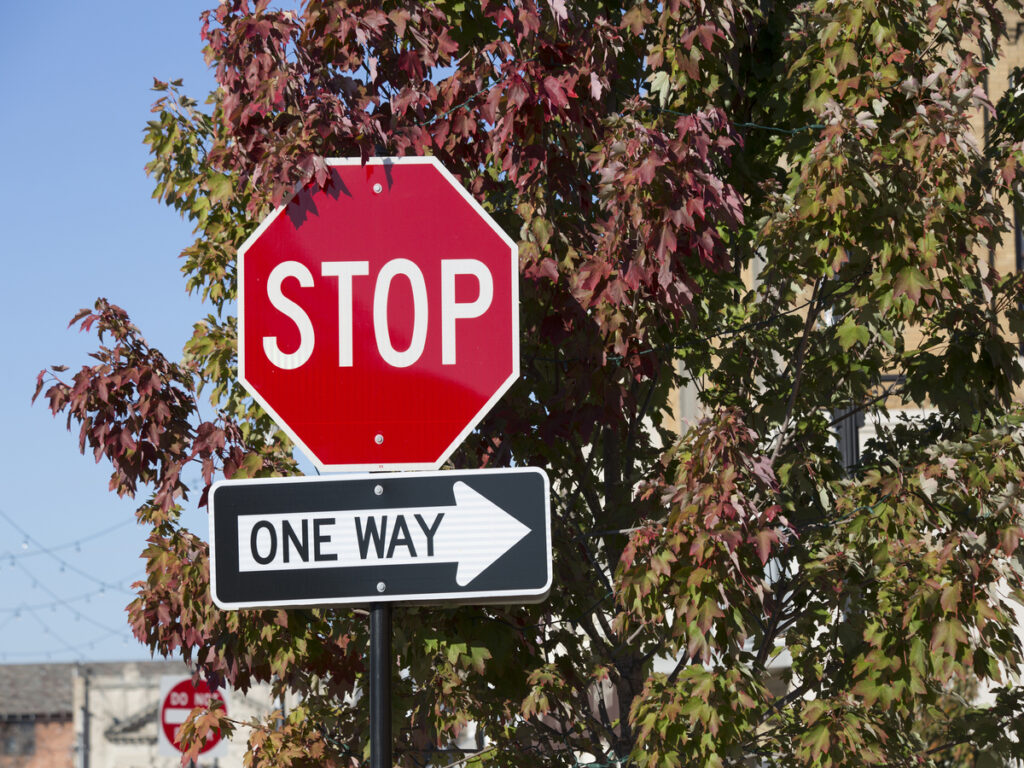
Basato sul testo vs. Segni basati su simboli
I paesi di lingua inglese usano molto le parole sui segnali stradali. Negli Stati Uniti, La maggior parte delle persone legge bene l'inglese. Questo significa che i segni delle parole funzionano per quasi tutti. I conducenti vedono parole come “Fermare” O “Prodotto” e sapere cosa fare. Il paese è grande, E non ci sono molti conducenti stranieri. Ecco perché i segni di testo sono comuni. In luoghi con molte lingue, i simboli aiutano più persone a capire. Ma negli Stati Uniti, I segni di parola sono usati di più.
Alcune persone non conoscono i pittogrammi se non li hanno mai visti. Per esempio, Un triangolo rovesciato significa “Prodotto.” Se non c'è parola, Alcuni driver potrebbero non saperlo. I segni delle parole danno istruzioni chiare. Questo aiuta i conducenti a decidere velocemente e mantiene il traffico sicuro.
Le parole sui segnali di sicurezza del traffico aiutano le persone a capire meglio. In luoghi di lingua inglese con poche lingue, I conducenti cercano parole più dei simboli. Da questa parte, C'è meno confusione. Le strade rimangono più sicure per tutti.
Segnali stradali bilingui e multilingue
Alcuni posti hanno più di una lingua principale. I segnali stradali spesso usano entrambe le lingue lì. Il Canada è un buon esempio. In Quebec, Molti segni mostrano francese e inglese. Questo aiuta tutti i conducenti a conoscere le regole. I segni bilingui usano parole e simboli per chiarire le cose.
Gli studi mostrano che i segni bilingui aiutano la sicurezza e la comprensione. Nell'Unione europea, I segni usano due lingue e simboli. Questo aiuta i conducenti di diversi paesi a sapere cosa fare. Il Giappone usa giapponese e inglese con i segni, più icone chiare. Questi modi aiutano i conducenti a reagire più velocemente e rendono le strade più sicure.
| Aspetto | Nuova Zelanda | Canada |
|---|---|---|
| Stato di lingua ufficiale | Te Reo Maori è ufficiale da allora 1987 | Nessun mandato legale diretto per i segni bilingui |
| Politica sulla lingua dei segni stradale | Principalmente inglese | Bilingue in alcune regioni (PER ESEMPIO., Quebec) |
| Problemi di sicurezza | La ricerca non mostra alcun aumento degli incidenti con segni bilingui | N / A |
I segni bilingui non causano più incidenti. Aiutano i conducenti provenienti da diversi sfondi a sentirsi al sicuro e inclusi.
Coding a colori nei segnali stradali
Standard di colore globali
I segni di sicurezza del traffico usano i colori per dire ai conducenti cosa fare. Rosso significa fermarsi o non entrare. Il giallo avverte del pericolo davanti. Spettacoli verdi dove puoi andare. Blue fornisce informazioni utili. L'arancia è per il lavoro su strada o per i cambiamenti. Questi colori aiutano i driver ad agire velocemente e a stare al sicuro.
La maggior parte dei paesi usa lo stesso Regole di colore. L'Unione europea ha un sistema per questo. I triangoli rossi avvertono i conducenti del pericolo. I cerchi rossi mostrano le regole che devi seguire. I segni usano simboli più delle parole. I limiti di velocità usano i numeri metrici. I segni hanno materiali lucenti e lettere speciali. Questo aiuta le persone a vederli di notte. L'Australia utilizza anche un sistema chiaro. Segnali di avvertimento sono diamanti gialli con immagini nere. Gli avvertimenti temporanei usano rettangoli gialli o arancioni. I segni del limite di velocità hanno cerchi rossi attorno ai numeri. L'Australia usa il carattere gotico autostradale per rendere le parole facili da leggere. I materiali lucenti aiutano i conducenti a vedere i segni in qualsiasi tempo.
| Colore | Senso | Tipo di segno di esempio |
|---|---|---|
| Rosso | Fermare, divieto | Fermare, Vietato l'accesso |
| Giallo | Avvertimento | Curva in anticipo |
| Verde | Direzione, consentito | Uscita, Marcatore di rotta |
| Blu | Informazioni, guida | Servizi, Parcheggio |
| Arancia | Costruzione, cambiamenti | Lavoro stradale davanti |
Adattamenti e percezioni locali
I paesi cambiano regole di colore per adattarsi alle proprie strade. Gli Stati Uniti usano diamanti gialli per gli avvertimenti. Le zone scolastiche usano segnali gialli brillanti. L'arancia è per le aree di costruzione. Il Canada fa lo stesso ma aggiunge due lingue su alcuni segni. L'Australia utilizza diamanti gialli per gli incroci di animali. Questi segni mostrano canguri o vombi. Il Regno Unito usa i triangoli rossi per avvertimenti e rettangoli blu per informazioni.
I conducenti in ogni paese imparano i colori e le forme rapidamente. I cambiamenti locali aiutano i conducenti a sapere cosa significano i segni. Per esempio, L'Australia usa immagini di animali su cartelli gialli per avvertire sugli animali. Il Regno Unito utilizza triangoli rossi per mostrare il pericolo. Questi cambiamenti corrispondono alla cultura locale e alle esigenze della strada.
Materiali lucenti e lettere chiare rendono i segni facili da vedere. L'uso degli stessi colori aiuta i driver a fare buone scelte. Le modifiche locali fanno funzionare meglio i segni per tutti. I paesi usano sia le regole del mondo che le idee locali per proteggere le strade.
Adattamenti locali e culturali
Impatti culturali sui segnali stradali
La cultura cambia il modo in cui le persone fanno e leggono segnali stradali. In luoghi di lingua inglese, I designer usano sia parole che immagini. Lo fanno perché le persone lì piacciono le direzioni chiare. I segnali stradali britannici hanno sia immagini che parole dettagliate. Questo corrisponde a ciò che le persone nel Regno Unito piace. Ma i conducenti che non parlano l'inglese possono trovare questi segni difficili. La lingua sui segni può mostrare ciò che un paese valori. In Canada, I segni usano sia l'inglese che il francese. Questo aiuta tutti a sentirsi inclusi e soddisfa i bisogni reali.
I colori possono significare cose diverse in ogni cultura. Il rosso spesso significa pericolo o fermata. Ma in alcuni punti, Il rosso è fortunato. I designer devono pensare a queste differenze. Questo aiuta tutti a capire i segni. Gli studi mostrano che i driver di altri paesi possono essere confusi. Se i segni non corrispondono alla propria cultura, Possono commettere errori. Questo può causare problemi sulla strada. Fare segni che si adattano alle culture locali aiuta tutti i conducenti a rimanere al sicuro.
Nota: Ciò in cui le persone credono e la loro storia cambiano come sembrano i segni. Queste cose cambiano anche il modo in cui le persone reagiscono ai segni. I designer devono pensare alle usanze locali e a ciò che le persone si aspettano. Questo li aiuta a fare buoni segnali stradali.
Esempi regionali unici
Molti luoghi fanno speciali segnali di sicurezza del traffico per le proprie esigenze. Ad esempio, L'Australia ha segnali di attraversamento di animali con canguri o vombi, che avvertono i conducenti sugli animali sulla strada. Allo stesso modo, Il Regno Unito presenta segni che mostrano corsie strette o curve acute, che provengono da vecchie strade del paese. Inoltre, Il Quebec in Canada utilizza solo cartelli in francese, riflettendo la lingua della zona e le persone che vivono lì.
- I conducenti in nuovi luoghi hanno spesso problemi con nuovi segni.
- Turisti e persone di altri paesi guidano più attentamente quando vedono nuovi segni.
- Alcuni conducenti possono scegliere la corsia sbagliata se le strade non sono come a casa.
- I cartelloni pubblicitari sul lato della strada possono distrarre i conducenti. Ciò rende più difficile vedere segni importanti e può causare incidenti.
La tabella seguente mostra come alcuni luoghi cambiano segni per le esigenze locali:
| Regione | Esempio di segno unico | Scopo |
|---|---|---|
| Australia | Kangaroo Crossing | Avvertire la fauna selvatica |
| Quebec, Canada | Segni stradali solo francese | Riflettere la lingua locale |
| Regno Unito | Segni di rete stradale medievale | Mostrare strade strette o tortuose |
I cambiamenti locali aiutano i conducenti a sapere cosa aspettarsi sulla strada. Queste modifiche rendono le strade più sicure e aiutano tutti a viaggiare più facilmente.
Segnali stradali e tecnologia moderni
Segni intelligenti e digitali
I segnali stradali intelligenti utilizzano nuovi strumenti per aiutare i conducenti a rimanere al sicuro. Le città negli Stati Uniti e nel Regno Unito ora utilizzano sistemi intelligenti. Questi sistemi cambiano segnali guardando il traffico in tempo reale. Sensori, telecamere, e i radar contano auto sulla strada. L'IA aiuta a decidere quando cambiare le luci o mostrare avvertimenti. A Pittsburgh, segnali intelligenti tagliati in attesa 40%. Fanno anche viaggi 25% Più veloce. Swindon nel Regno Unito usa le luci che cambiano con velocità per fermare gli incidenti. Alcuni segni intelligenti parlano con auto e telefoni. Condividono informazioni per aiutare i conducenti a saltare gli ingorghi. Questi sistemi aiutano anche gli autobus e i tram a muoversi più velocemente.
| Beneficio | Risultato |
|---|---|
| Riduzione della velocità | Fino a 62% in alcune aree |
| Riduzione degli incidenti | Fino a 40% meno crash |
| Miglioramento della conformità | La conformità del limite di velocità è aumentata da 29% A 86% |
| Raccolta dei dati | Migliore gestione e applicazione del traffico |
I segni intelligenti aiutano le città a raccogliere i dati sul traffico. I pianificatori usano questi dati per rendere le strade più sicure e più fluide. L'apprendimento automatico può indovinare i modelli di traffico e cambiare i segnali per fermare gli inceppamenti. I gemelli digitali sono copie di computer dei sistemi di traffico. Gli esperti li usano per testare le idee prima di provarle su strade reali.
Sostenibilità e innovazione
I moderni segnali di sicurezza del traffico aiutano anche il pianeta. Molte città usano l'energia solare e le luci a LED per risparmiare energia. Questi segni funzionano bene lontano dalle città e necessitano di meno fissaggio. I segnali adattivi tagliano l'uso del carburante e l'inquinamento fermando la frenata e l'attesa extra. In 100 città, Questi sistemi risparmiano miliardi ogni anno. Abbassano il co₂ e rendono l'aria più pulita. Il rapporto costi di benefici per i segnali adattivi riguarda 21.6. Questo dimostra che sono un buon affare per tutti.
- I segni alimentati da solare aiutano il pianeta.
- Le luci a LED durano più a lungo e risparmiano energia.
- I segnali adattivi aiutano le città a raggiungere gli obiettivi del carbonio.
- Meno inquinamento significa una salute migliore per tutti.
I segnali stradali intelligenti e moderni mostrano come la tecnologia rende le strade più sicure e più verdi. I paesi di lingua inglese stanno guidando nell'uso di questi nuovi sistemi per aiutare il traffico e l'ambiente.
Impatto sulla sicurezza stradale e sulla standardizzazione
Benefici per la sicurezza e la conformità
I segnali stradali standardizzati aiutano a mantenere le strade al sicuro. Quando i conducenti vedono le stesse forme e colori, Sanno cosa fare. Questo li aiuta a reagire rapidamente e fare buone scelte. Segni chiari aiutano tutti, anche visitatori di altri luoghi. In molte città, Segnali di velocità radar che seguono Regole dell'11 ° edizione MUTCD ha fatto le auto più lente 30%. I conducenti nelle zone scolastiche hanno visto la loro velocità di più quando hanno visto questi segni. I segni di visualizzazione della velocità dinamica hanno anche aiutato a rallentare le auto, Soprattutto dove molte persone camminano.
Strumenti di calma del traffico Come rumble strips e forme speciali di pavimentazione hanno fatto incidenti tra le auto e le persone passano a circa 21-25%. Dossi della velocità e le gobbie hanno reso la strada attraversando la strada più sicura per tutti. In alcune aree, Le telecamere fisse per le violazioni del traffico hanno abbassato gli incidenti 5-6%. Questi cambiamenti mostrano che buoni segni e strumenti di sicurezza lavorano insieme per proteggere le persone.
L'uso degli stessi segnali di controllo del traffico e strumenti di sicurezza aiuta i conducenti a prestare attenzione e seguire le regole. Ciò significa meno incidenti e strade più sicure.
Consapevolezza e istruzione pubblica
Insegnare alle persone i segnali stradali e le regole di sicurezza aiutano molto. Molti paesi hanno programmi per aiutare i conducenti a imparare cosa significano i segni. Le scuole insegnano agli studenti come leggere segnali e attraversare le strade in sicurezza. Le città utilizzano cartelloni pubblicitari, radio, e social media per ricordare ai conducenti i limiti di velocità e la guida sicura.
L'istruzione pubblica aiuta i conducenti a ricordare di rallentare nelle zone scolastiche e di guardare le persone che attraversano. Quando tutti conoscono le regole, Le strade diventano più sicure per tutti. I programmi della comunità chiedono inoltre alle persone di segnalare segni rotti o nascosti. Questo lavoro di squadra mantiene i segni facili da vedere.
- Le campagne di sicurezza stradale raggiungono milioni ogni anno.
- Le scuole e i gruppi locali insegnano ai bambini e agli adulti della guida sicura.
- Promemoria e avvisi aiutano i conducenti a rimanere concentrati ed evitare errori.
Buona educazione e segni chiari lavorano insieme per rendere le strade più sicure e salvare vite.
Analisi comparativa
Somiglianze chiave e differenze
I grandi paesi di lingua inglese hanno alcuni segnali stradali che sembrano uguali. Usano tutti un Segno di stop rosso sagato come un ottagono. Questa forma e colore aiutano i conducenti a vederlo velocemente. Molti posti usano anche diamanti gialli o triangoli rossi per gli avvertimenti. Questi segni mostrano che il pericolo è avanti. Questi segni condivisi aiutano i conducenti a conoscere le regole in nuovi luoghi.
Ma ci sono anche molti modi in cui i segnali di sicurezza del traffico sono diversi. Gli Stati Uniti usano più parole sui suoi segni. Per esempio, I segni dicono “FERMARE” O “PRODOTTO.” Il Regno Unito. e l'Australia usa più immagini e meno parole. Questo aiuta le persone che non leggono bene l'inglese. I colori sono diversi anche in ogni paese. Gli Stati Uniti. Usa il verde per i cartelli autostradali e i diamanti gialli per gli avvertimenti. Il Regno Unito. Utilizza il blu per le autostrade, Verde per le strade principali, e triangoli rossi per avvertimenti. L'Australia usa entrambi gli stili e aggiunge segni speciali per gli animali.
La tabella seguente mostra come questi paesi siano uguali e diversi:
| Caratteristica | Stati Uniti | Regno Unito | Australia |
|---|---|---|---|
| Segno di stop | Ottagono rosso, “FERMARE” testo | Ottagono rosso, “FERMARE” testo | Ottagono rosso, “FERMARE” testo |
| Forma del segnale di avvertimento | Diamante giallo | Triangolo rosso confuso | Diamante giallo, triangolo |
| Uso del testo vs. Simboli | Più testo, meno simboli | Più simboli, meno testo | Mix di testo e simboli |
| Colore del segno direzionale | Verde | Blu (autostrade), verde | Verde |
| Adattamenti locali | Solo inglese, Regole MUTCD | Più simboli, Regole di Tsrgd | Segni di animali, COME 1742 regole |
Nota: Queste differenze provengono dalla cultura e dalle leggi di ogni paese. Ecco perché l'apprendimento dei segnali stradali locali è importante per tutti.
Implicazioni per i driver internazionali
I conducenti di altri paesi possono avere problemi con nuovi segnali stradali. Devono imparare nuove forme, colori, e simboli. Alcuni posti usano miglia all'ora, ma altri usano chilometri all'ora. Questo può rendere le cose confuse e meno sicure. I conducenti devono guardare le regole e i segni locali per evitare errori.
Molte persone studiano segnali stradali prima di viaggiare. Usano i libri, siti Web, e guidare le app da imparare. Alcuni paesi hanno segni in più di una lingua o usano simboli facili. Smart Signs e GPS forniscono aggiornamenti e indicazioni dei driver. Questi strumenti aiutano i conducenti a seguire le regole e rimanere al sicuro.
Regole internazionali, Come la Convenzione di Vienna, Prova a rendere i segni più simili. Ma ogni paese ha ancora alcuni segni speciali. I conducenti devono prestare attenzione e imparare rapidamente. Lezioni di conducente e segni chiari aiutano tutti a sapere cosa fare.
- I conducenti dovrebbero controllare le unità di velocità prima di guidare.
- Dovrebbero cercare forme e colori che conoscono.
- GPS e segni intelligenti aiutano a fermare la confusione.
- L'apprendimento delle regole della strada locale rende la guida più sicura.
Mancia: Guarda sempre i segnali stradali locali e le leggi sul traffico prima di guidare in un nuovo paese. Questo aiuta a fermare gli incidenti e mantengono tutti al sicuro.
I paesi di lingua inglese cambiano segnali stradali per i propri bisogni. Usano le regole del mondo ma aggiungono anche cose speciali per i loro driver. Le persone che visitano dovrebbero imparare i segni prima di guidare. I conducenti locali fanno meglio con i segni che conoscono e comprendono.
In futuro, La tecnologia e il lavoro di squadra intelligenti rendono i segnali stradali più sicuri e più facili da leggere. 🚦
Domande frequenti
Cosa significano diversi colori del segnale stradale?
Rosso significa fermarsi o non entrare. Il giallo avverte del pericolo. Green mostra le indicazioni. Blue fornisce informazioni utili. Zone di costruzione segni arancioni. I conducenti imparano questi colori per stare al sicuro in viaggio.
Perché alcuni paesi usano sia parole che simboli sui segnali di sicurezza del traffico?
Alcuni paesi usano entrambi per aiutare tutti a capire. I simboli aiutano le persone che non leggono la lingua. Le parole forniscono dettagli extra. Questo mix chiarisce i segni per i conducenti e i visitatori locali.
In che modo i segni bilingui aiutano i conducenti?
I segni bilingui mostrano informazioni in due lingue. Aiutano più persone a capire le regole. In Canada, Per esempio, I cartelli in inglese e francese rendono le strade più sicure per tutti.
Sono segnali stradali intelligenti comuni ovunque?
I segnali stradali intelligenti appaiono più nelle grandi città. Questi segni usano sensori e luci per fornire aggiornamenti in tempo reale. Aiutano a gestire il traffico e proteggere le strade, Soprattutto durante i periodi di impegno.

